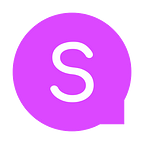Homophones and homographs are weird little words with an insane amount of power. If you don’t believe me, imagine reading a sentence like “They’re going over there to get their shoes.” What about “Lead me to the lead”? Did you pronounce the first “lead” with a long e sound and the second with a short e? You probably did. Most people don’t have a problem using homophones and homographs when they read. It’s writing them where things start to get a little crazy. Today, I’m going to help you learn how to use homophones and homographs by telling you what they are, give you the most common ones as examples, tips for remembering them, and more resources to help you.
What are Homophones and Homographs?
Although related, these two are not the same thing. The first has to deal with how the words sound, and the second has to deal with how they are written. Homophones are two or more words that sound the same, but they have different meanings (and probably spellings too). Homographs, however, are two or more words that have the same spelling, but they may sound differently and have different meanings.
When it comes to writing, homophones are easy to point out because they have different spelling. Homographs, however, require context to help you determine which is being used. In the examples I used above, the first sentence uses homophones.
They’re going over there to get their shoes.
This sentence uses homophones, which I wrote in bold this time so you could see them.
The second example, however, uses homographs.
Lead me to the lead.
We know these are homographs, not homophones, because they have the same spelling.
So now that I’ve touched on these two examples, let me give you some more examples with some more common homophones and homographs.
The Most Common Homophones and Homographs
There are over 7,000 homophones and homographs used in the English language. If I were to try and cover all of them, this would turn into a book. Instead, I’m going to take a few that I feel are the most important and break them down for you.
These 3 are some of the most commonly misused homophones that I see in writing.
Examples of Homophones
- Hear and here: When you hear, you are perceiving sound. When you are here, you are in that place.
- Bored and board: When you’re bored, you need something to entertain you. A board is from a game (game board) or some other thin piece of material made into a flat surface.
- Bare and bear: When you’re bare, you need clothing. When you’re with a bear, you’d better run!
Examples of Homographs
- Read and read: When you want to use read, it’s pronounced with a long e sound and means to review written material. (You need to read this blog post). When you want to use read, it’s pronounced with a short e sound and means that you reviewed the written material in the past. (You already read this blog post.)
- Letter and letter: These are both spelled the same and pronounced the same. However, one refers to something you wrote to a family member and sent in the mail, and the other refers to the alphabet.
- Does and does: With does, the o makes a long o sound, and the e is silent. This refers to multiples of an animal — a doe. (Look at those does over there!) In the word does, the o makes the short u sound instead, and the e is still silent. The s, however, makes the z sound instead of the s sound. This word refers to something performed or achieved by someone else. (She does videos.)
Now, I know exactly what you’re thinking. You can’t really see the difference with homophones and homographs, and you’re exactly right. Homophones and homographs have to be heard to be truly understood. Luckily, there are already videos out there for that, which you’ll find below.
If you still need help with homophones or homographs contact me using my Instagram! I’d be glad to give you a hand.
-MadamTatas
